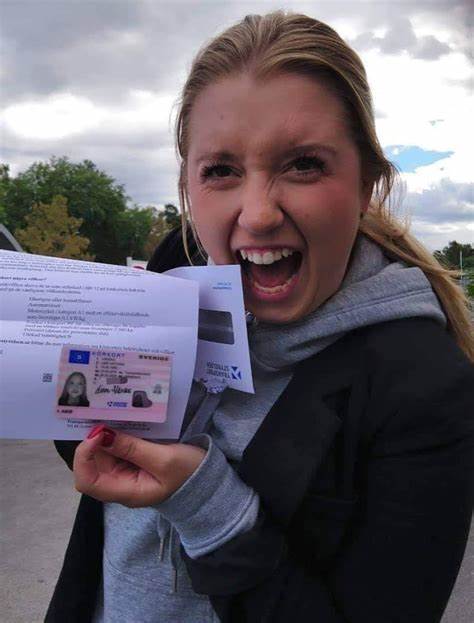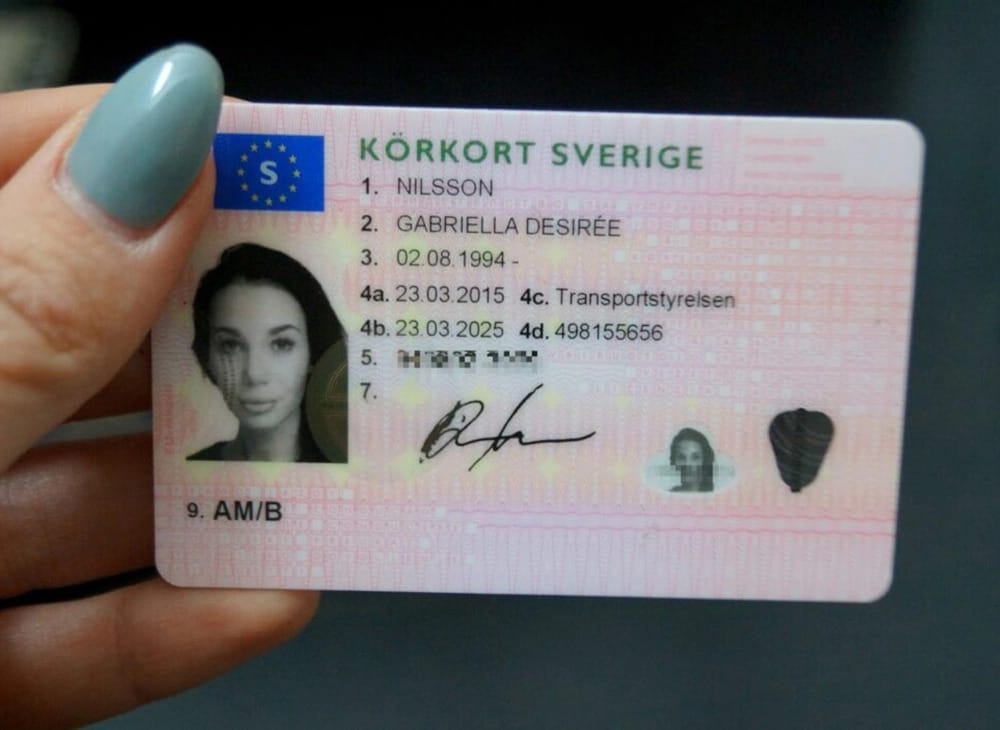15 Things You Don't Know About Buy Driver's License Certificate
페이지 정보

본문
Navigating the World Without a Driver's License: Exploring Alternatives and Implications
In today's world, where mobility is a cornerstone of life, the concept of living without a driver's license might appear difficult. However, for Köpa A1 Körkort Online svenskt Köpa A1 Körkort Online (swedish-drivers-license72541.wikinstructions.com) some people, the choice to pass up a driver's license is a mindful choice driven by numerous aspects, including environmental issues, cost, and personal choice. This article looks into the options to driving and the ramifications of living without a driver's license, offering a thorough guide for those considering this way of life.
Comprehending the Decision
Picking not to have a driver's license is an individual choice that can come from a number of reasons. For some, it's a dedication to reducing their carbon footprint and promoting sustainable living. Others discover the cost of owning and preserving an automobile prohibitive, while some simply prefer the benefit and freedom of other modes of transport. Regardless of the inspiration, living without a driver's license requires cautious planning and a willingness to adjust.
Alternatives to Driving
Mass transit
- Buses and Trains: Public transportation systems, such as buses and trains, are typically the most reliable and economical options. They are accessible in many urban areas and offer a structured way to browse cities and rural regions.
- Train and Light Rail: In larger cities, subways and light rail systems provide fast and efficient travel, typically bypassing heavy traffic and lowering travel time.
Ride-Sharing Services
- Uber and Lyft: These popular ride-sharing apps offer on-demand transportation, making it easy to navigate without a car. They are especially helpful for late-night travel and in areas with restricted public transport.
- Carpooling: Joining or forming carpool groups can decrease expenses and environmental effect. Many community platforms and apps assist in carpooling for routine commutes.
Bikes and E-Scooters
- Bicycles: köpa svenskt köRkort Cycling is a healthy and environmentally friendly method to take a trip, specifically for shorter ranges. Lots of cities have actually dedicated bike lanes and bike-sharing programs to encourage this mode of transport.
- Electric Scooters: E-scooters are a trendy and practical option for fast, short trips. They are frequently readily available through rental services in metropolitan areas and can be an enjoyable alternative to traditional modes of transport.
Strolling and Jogging
- Strolling: For those living in walkable communities, walking is a basic and reliable method to remain active and navigate. It's free, requires no unique equipment, and is excellent for the environment.
- Jogging: Similar to walking, running can be a healthy and low-priced method to travel, especially for brief ranges.
Electric and Hybrid Vehicles
- Electric Scooters and Bikes: For those who still want the benefit of an individual car but are concerned about the environment, electric scooters and bikes are a feasible choice. They are low-maintenance and produce fewer emissions.
- Hybrid Cars: If the decision to prevent a driver's license is mainly due to ecological concerns, however the need for a car is unavoidable, hybrid automobiles use a middle ground. They combine standard fuel engines with electric motors to reduce fuel usage and emissions.
Telecommuting and Remote Work
- Work from Home: Many companies now offer remote work choices, permitting workers to work from home or other areas. This can considerably decrease the requirement for day-to-day commuting and the associated expenses.
- Virtual Meetings: Technology has actually made it possible to conduct business meetings and other interactions essentially, additional minimizing the requirement for travel.
Ramifications of Living Without a Driver's License
Financial Savings
- Reduced Vehicle Costs: Not having a car means preventing expenditures such as car payments, insurance coverage, maintenance, and fuel.
- Public Transport Costs: While public transport does have costs, they are normally lower than those connected with owning a car.
Environmental Impact
- Lower Carbon Emissions: By avoiding the usage of personal vehicles, individuals can considerably decrease their carbon footprint, contributing to a more sustainable environment.
- Lowered Traffic Congestion: Fewer vehicles on the road can lead to minimized traffic jam, making travel more efficient for everyone.
Health Benefits
- Increased Physical Activity: Using options like walking, running, and cycling can improve physical health and psychological well-being.
- Reduced Stress: Avoiding the daily troubles of driving, köpa Svenskt körkort such as traffic and parking, can result in a more relaxed and stress-free way of life.
Social and Community Engagement
- Neighborhood Connections: Relying on public transport or ride-sharing services can promote a sense of community and social interaction.
- Assistance for Local Businesses: Walking or cycling to regional services can help support the regional economy and minimize dependence on big, environmentally unfriendly corporations.
Legal and Practical Considerations
- Identification Issues: In many nations, a driver's license works as a main type of recognition. Individuals without a license may need to carry alternative kinds of ID, such as a passport or state-issued ID card.
- Travel Restrictions: Without a driver's license, travel to remote locations or places with restricted public transport can be challenging. Planning ahead and utilizing alternative transport approaches is important.
Frequently asked questions
Q: How can I navigate if I live in a rural area without a driver's license?
- A: In rural areas, alternatives like ride-sharing services, carpooling, and public transport may be limited. Think about joining community groups or Köpa taxilicens Körkort Online platforms to discover local carpooling alternatives. Electric scooters and bikes can also work for shorter ranges. Furthermore, lots of rural areas have community transport services that can be accessed for necessary trips.
Q: Can I still travel internationally without a driver's license?
- A: Absolutely. A driver's license is not needed for a lot of international travel. However, you may need a passport or other types of recognition. For countries where driving is essential, you can lease a car with a valid driver's license or use local transportation services.
Q: What are the best apps for finding ride-sharing and carpooling options?

- A: Popular apps for ride-sharing include Uber, Lyft, and Bolt. For carpooling, Waze Carpool, Ridester, and Scoop are highly suggested. These apps often provide real-time details on readily available rides and assist connect you with chauffeurs heading in the very same instructions.
Q: How do I manage without a driver's license if it is required for many kinds of identification?
- A: In numerous places, a state-issued ID card or a passport can work as a main kind of recognition. It's also a great concept to bring several types of ID, such as a charge card or a voter registration card, to ensure you are prepared for different scenarios.
Q: Are there any health dangers connected with utilizing public transport?
- A: While public transport can expose individuals to a higher danger of transmittable illness, specifically in congested conditions, the benefits typically exceed the risks. Practicing good hygiene, such as cleaning hands frequently and wearing a mask, can help mitigate these risks. Furthermore, many public transportation systems have executed security measures to protect guests.
Q: What are the ecological benefits of not driving a car?

- A: Not driving a car can significantly lower your carbon footprint. Automobiles are a major source of greenhouse gas emissions, and by choosing public transport, biking, or strolling, you can contribute to a healthier environment. This likewise helps in reducing air contamination and traffic congestion, improving total quality of life.
Living without a driver's license is a practical and frequently advantageous choice for lots of individuals. By exploring and using alternative modes of transportation, one can conserve money, minimize their environmental impact, and enhance their health and well-being. While there are difficulties, such as navigating recognition and travel issues, the benefits often make the effort rewarding. Whether driven by individual values or practical considerations, the decision to give up a driver's license can result in a more sustainable and satisfying lifestyle.
Additional Resources
- Public Transport Apps: Transit, Moovit, Citymapper
- Biking and Walking Apps: Strava, MapMyRide, Google Maps
- Neighborhood Carpooling Platforms: Waze Carpool, Ridester, Scoop
- Remote Work and Telecommuting Tools: Zoom, Microsoft Teams, Slack
By welcoming these alternatives, people can develop a way of life that lines up with their worths and requirements, adding to a more sustainable and connected world.
- 이전글The One Hythian Macaw For Sale Trick Every Person Should Be Aware Of 25.02.24
- 다음글How To Beat Your Boss On Buy A Swedish Driver's License 25.02.24
댓글목록
등록된 댓글이 없습니다.

